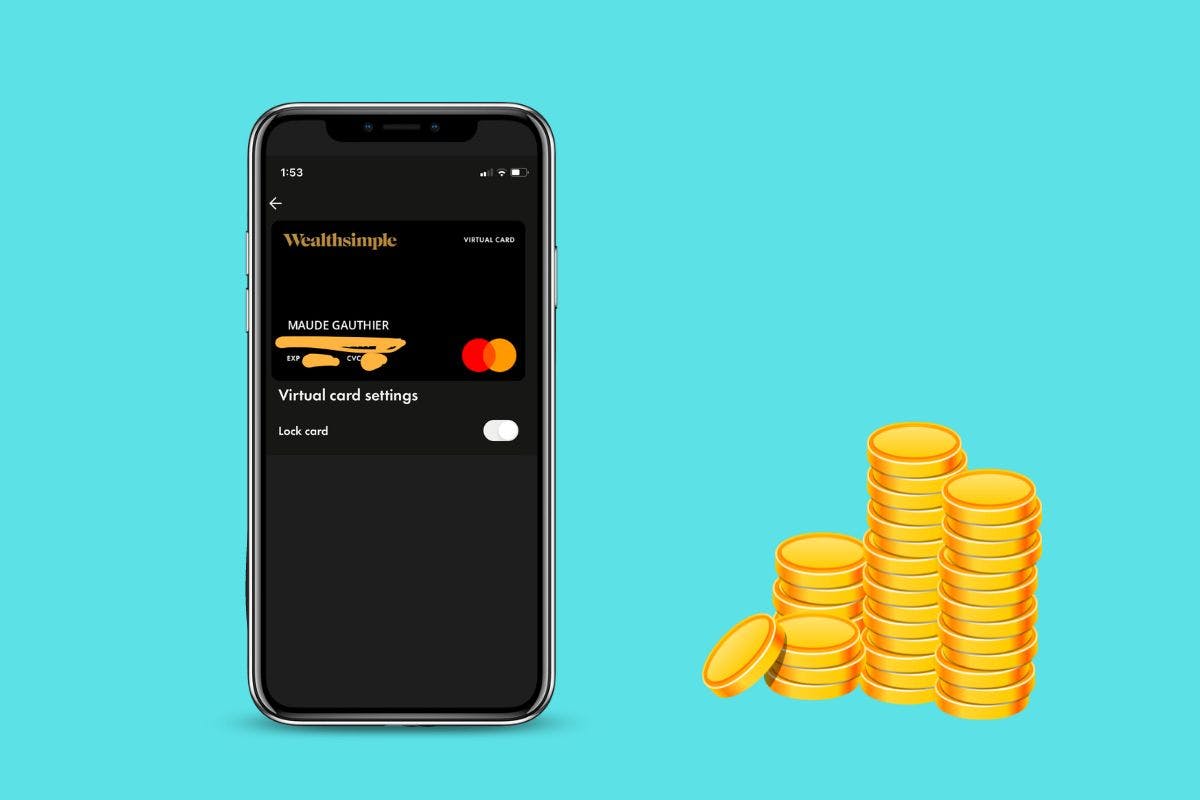Wealthsimple Prepaid Mastercard: My Experience with Wealthsimple Chequing account
By David Szemerda | Published on 20 Oct 2025

Wealthsimple is a Canadian fintech known for its investment app. Today, it offers many other products. I’ve had a Wealthsimple account for several years and applied for the Wealthsimple prepaid Mastercard in August 2025. How does it compare with the best prepaid cards in Canada? Pretty well, I’d say. I’ve been holding funds in this account for several months and I’m satisfied with my experience. Let me tell you why.
-
Fees
-
Savings Interest Rate
-
Features
At a glance
Wealthsimple Chequing account is like a checking account, a savings account and a debit and credit card all in one. Features are numerous, the app is user-friendly and it offers an interesting balance between features and interests on savings.
Benefits of the Wealthsimple prepaid Mastercard
I can use my Wealthsimple Mastercard, which works like a prepaid card, for online and in-store purchases. I’ve added it to Apple Wallet so I can use it everywhere. It’s free and there’s no minimum balance. It’s also possible to order a physical card, if that’s what you prefer.
Most of the time, I lock my card. It’s very simple: I click on the card-shaped icon in the app (at the top right corner) and access my card’s functionalities. Once locked, there’s no danger of theft, even with Apple Wallet and on websites where I’ve registered my card. For example, I added this card to my Amazon profile to make purchases more quickly. It automatically registered as a debit card, which means it takes money from my linked account.

In addition, there are no foreign transaction fees when using the Wealthsimple card to buy something in a currency other than Canadian dollars, which is very convenient. I haven’t tried it yet, but I’m going on vacation in a few weeks, so I’ll be testing this feature soon. Wealthsimple charges US transaction fees when I buy US stocks, for instance, so it’s refreshing to see the improvement here!


Card Features and How It Works
Wealthsimple’s prepaid Mastercard no longer offers a standard cash-back rate. Instead, the card is linked to the Wealthsimple Cash Account (chequing account), which earns interest and integrates directly with the rest of the Wealthsimple ecosystem (investing, crypto, managed portfolios).
You can still move money instantly between your Chequing account and your investing or crypto accounts, including fractional shares, which makes it easy to grow your balance even without a cashback program.
The Wealthsimple Cash Account (Chequing)
I use the Wealthsimple Cash Account to manage my emergency fund and set aside money for taxes. The account currently offers a yield of 1.25% for Core clients, 1.75% for Premium clients, and 2.25% for Generation clients.

Recently, I’ve been able to pay bills directly from my Wealthsimple Chequing account. I’ve started adding suppliers, such as Hydro-Quebec for my electricity bills. I plan to use this account more often.
It’s very easy to add money to my account. I usually use the “+” sign to add funds from my chequing account at another institution. I can also ask someone to send me money by Interac eTransfer or directly from their Wealthsimple account, if they have one. If I want to send money, it’s just as easy. It’s almost instantaneous. So the timescales are reasonable, but depositing from another institution’s account is a little slow, even if they’re still within industry standards. The first $1,000 is available right away, but any amount above that will take 5 working days to arrive.
Wealthsimple now offers chequebooks! You can get one for free if you have a Wealthsimple chequing account with direct deposit set up and have received at least one direct deposit. Otherwise, you can purchase a chequebook for $50 plus tax.
Alternatives to Wealthsimple Chequing account
Wealthsimple isn’t the only interesting company offering innovative products in Canada. Compare the different prepaid credit cards and choose the one that suits your needs. In my opinion, EQ Bank, Neo Financial and KOHO all offer good alternatives that might suit you.
Neo Money Card
[Offer productType=”SavingsAccount” api_id=”60fee79313fd2f260ff90749″ id=”173809″]The Neo Money Card comes with your Neo Money Account to give you quick access to your funds. With the card, you can earn an average of 5% cash back when you shop from over 10,000 Neo partner merchants. And every first-time purchase you make with a partner can give you up to 15% cash back or more. From the app, you can find tons of cash back opportunities near you so you never miss out. Plus, your account balance earns 1% interest until the moment you spend it.
EQ Bank Card
[Offer productType=”CreditCard” api_id=”63d2cb6a18196b6d2e1928c2″ id=”198047″]The EQ card is provided when you open a Personal account with EQ Bank, a fully-fledged bank. The money in your account earns between 2.5% and 4% interest, while your spending earns 0.5% cash back. It’s less than Wealthsimple, but still an interesting alternative. EQ lets you withdraw money from any ATM in Canada (they refund fees, if there are any, unlike Wealthsimple) and allows foreign currency transactions without fees.
KOHO Prepaid Mastercard
[Offer productType=”CreditCard” api_id=”637cf8206bbb7962c19ae225″ id=”144191″]KOHO offers a free prepaid card, as well as free and paid plans. With the free plan, you get 1% cash back on groceries and transportation, and 3% interest on your balance. With EQ, you need to schedule direct deposits or recurring bill payments to earn more than 2.5%, but with KOHO, it’s 3% with no strings attached. It’s possible to get a 2% cash back and 5% interest rate, but you have to pay a subscription fee, so do your calculations to make sure you get your money’s worth.
For my part, I’ve used these products and find that they each have their strengths. KOHO offers a lot of financial education and help with budgeting, for example, whereas Wealthsimple does not. On the other hand, with Wealthsimple, I can invest and transfer money quickly between my accounts.
